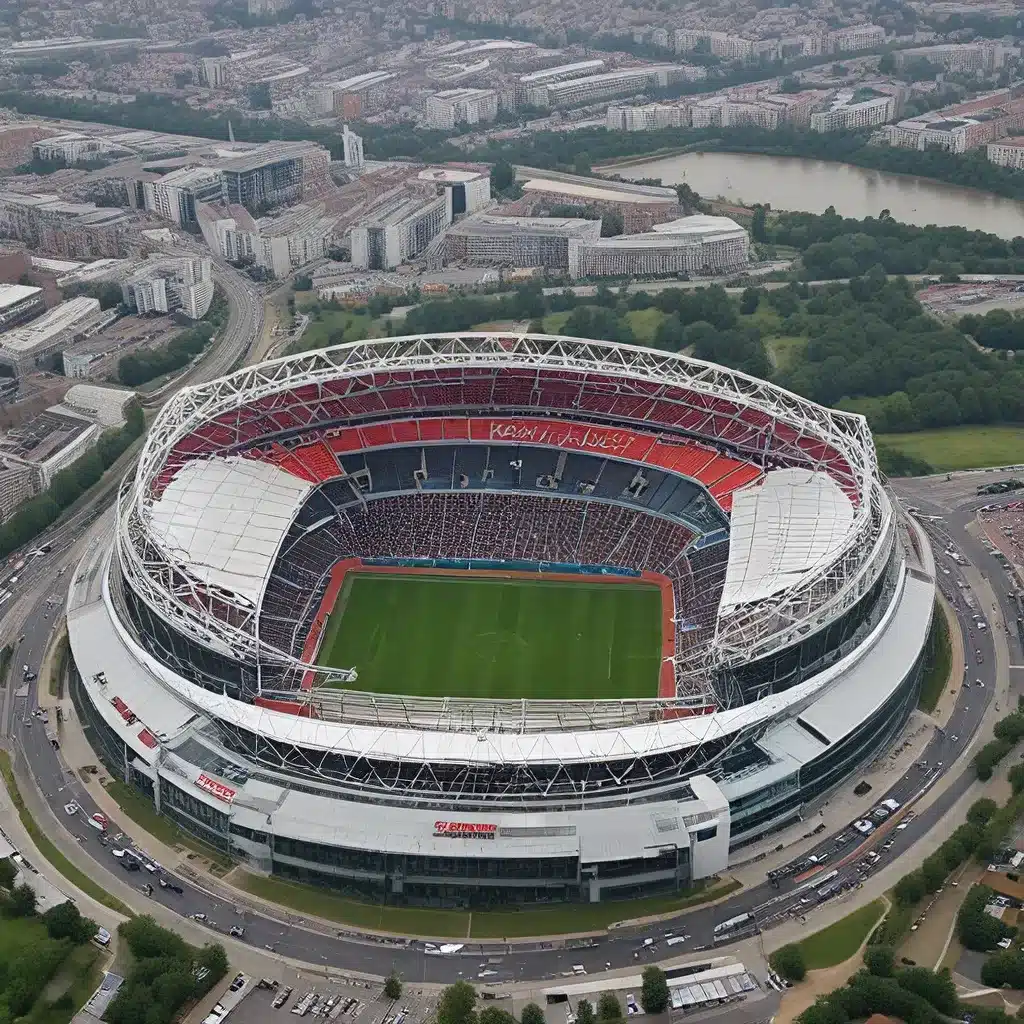
The Birthplace of English Football Legends
Wembley Stadium stands as a hallowed ground in the hearts and minds of football enthusiasts worldwide. Often referred to as the “cathedral of football,” this iconic venue has borne witness to some of the most defining moments in the sport’s history. From hosting the 1966 World Cup final, where England secured their first and only world championship, to the nail-biting action of EURO 96, Wembley has etched its name indelibly in the annals of the beautiful game.
The original Wembley Stadium opened its doors in April 1923, marking the beginning of a century-long legacy. Built for the British Empire Exhibition of 1924, the stadium was initially slated for demolition immediately after the event. However, the vision and foresight of Sir James Stevenson, a businessman and civil servant, ensured that the stadium would remain open, as football had been played on the grounds since the 1880s. Soon after, King George V officially opened the stadium, and the pitch was dubbed the “hallowed turf.”
The Iconic Wembley Arch and Its Symbolic Significance
The iconic Wembley Arch, which stands 133 meters tall and is visible for miles around, has become a defining feature of the stadium’s landscape. This striking architectural element not only serves as a landmark but also symbolizes the enduring spirit of the sport. The arch’s sleek, modern design is a testament to the stadium’s evolution, seamlessly blending the traditions of the past with the aspirations of the future.
The Wembley Arch is more than just a structural marvel; it represents the unwavering passion and devotion of football fans. Over the last hundred years, Wembley has fixed itself firmly into the nation’s hearts and minds, thanks to the unforgettable moments that have unfolded within its walls. The sight of the arch has become synonymous with the anticipation and excitement that precedes each match, as fans eagerly await the chance to witness their teams battle it out on the hallowed turf.
The Evolution of Wembley Stadium
The original Wembley Stadium, known as the “Empire Stadium,” was a grand, imposing structure that captured the imagination of the British public. However, as time passed, the stadium’s aging infrastructure and outdated facilities began to pose a challenge. In the early 2000s, the decision was made to demolish the old stadium and build a new, state-of-the-art facility that would better serve the needs of modern football.
The construction of the new Wembley Stadium was a massive undertaking, costing over £757 million and taking nearly six years to complete. The result was a world-class arena that boasted a range of cutting-edge features, including a retractable roof, improved accessibility, and enhanced hospitality amenities. The new stadium, which opened in 2007, has firmly cemented Wembley’s status as the “heart of football” in the United Kingdom and beyond.
The Hallowed Turf and Its Enduring Significance
The hallowed turf of Wembley Stadium has witnessed the triumphs and heartbreaks of countless football legends. From the immortal Pelé, who once proclaimed that “there’s only one Wembley,” to the heroic exploits of the English national team, the stadium has been the stage for some of the sport’s most iconic moments.
The 1966 World Cup final, where England defeated West Germany 4-2 to claim their first and only world championship, stands as one of the most celebrated events in Wembley’s history. The match, which was attended by a then-record crowd of over 96,000 people, is forever etched in the collective memory of football fans worldwide. The stadium’s ability to captivate and inspire audiences is a testament to its enduring significance in the world of football.
The Future of Wembley Stadium
As Wembley Stadium approaches its centenary, the question of its future looms large. While the stadium has undergone significant renovations and upgrades, ensuring its continued relevance in the ever-evolving landscape of modern football, there are ongoing discussions about its long-term viability.
Some experts believe that the stadium may need to undergo further renovations or even a complete overhaul to meet the demands of the 21st century. Factors such as technological advancements, changing fan preferences, and the need for sustainable infrastructure may all play a role in shaping Wembley’s future. Additionally, there are debates surrounding the stadium’s management and ownership, as well as the potential impact of external events, such as the COVID-19 pandemic, on its operations.
Despite these challenges, Wembley Stadium remains a source of immense pride and national identity for the people of England. As the heart and soul of English football, the stadium is likely to continue playing a central role in the sport’s rich history and cultural significance. As research and discussions continue, the future of this hallowed ground remains a topic of active study and speculation, with football enthusiasts eagerly anticipating the next chapter in Wembley’s storied legacy.

